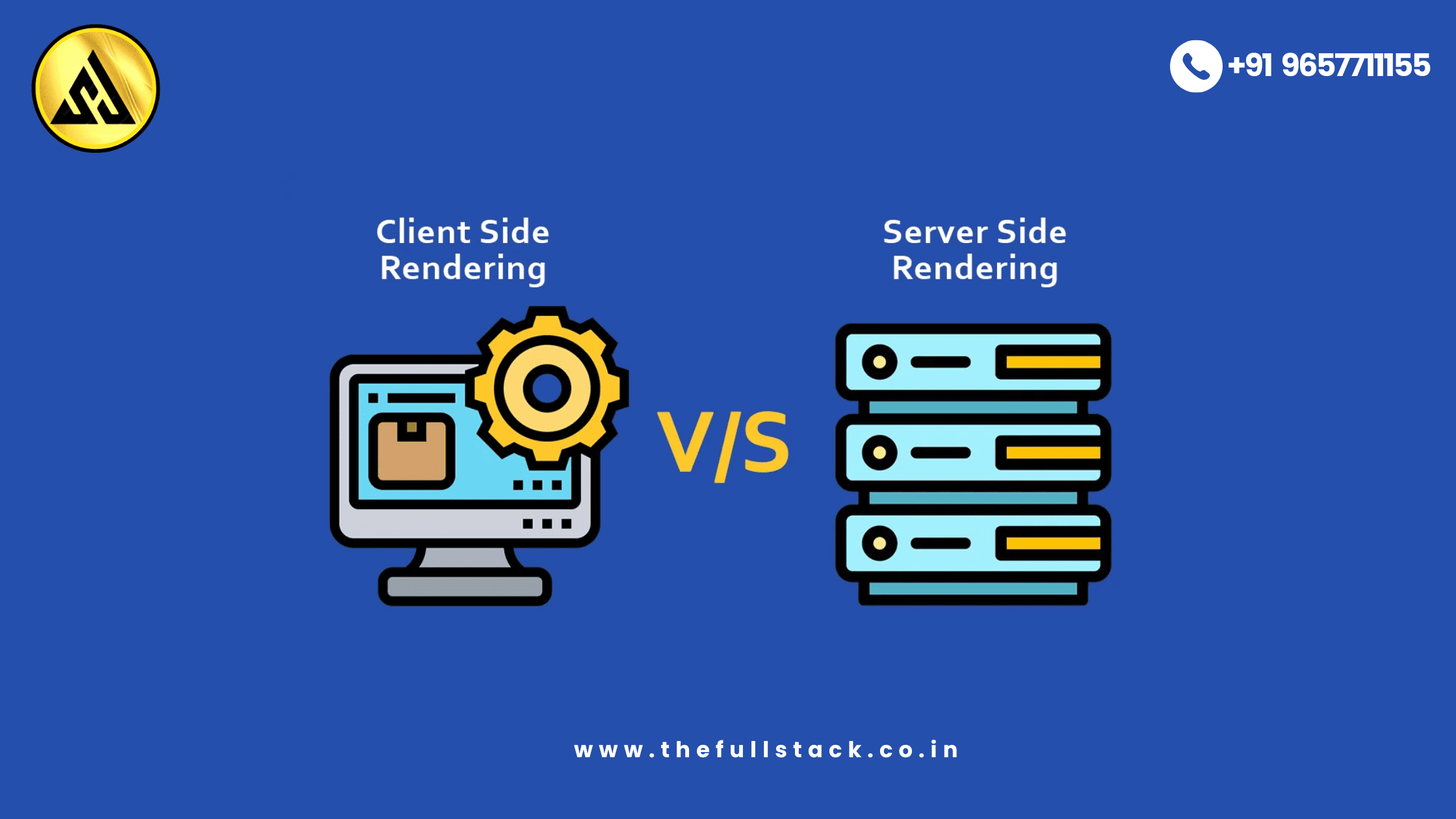
Server Side Rendering vs Client Side Rendering
In the field of web development, there are numerous techniques of rendering web pages: server-side rendering, client-side rendering, and server-side creation. Each strategy has pros and cons of its own, and the best one for your project will rely on your unique requirements and objectives. We’ll discuss the distinctions between these three strategies in this blog and offer examples to help you grasp them.
Rendering on the server side
The process of rendering web pages on the server and delivering the fully-rendered HTML to the client is known as server-side rendering, or SSR. With this method, the client receives the HTML as a complete page from the server, which also generates any dynamic data. The page is then shown by the client without any additional processing.
Next.js is a well-known example of an SSR framework. Writing React code and having it immediately rendered on the server with Next.js gives you the advantages of SSR without requiring you to handle the server yourself.
Benefits:
- quicker initial load times
- Better search engine optimization
- can offer customers with less capable devices or slower internet connections a better user experience.
Drawbacks:
- may need additional upkeep and server resources.
- If the client must make more server queries as a result, this may cause later page loads to be slower.
Working of SSR: When a user requests a page, the server generates the HTML for that page, including any dynamic data. The fully-rendered HTML is then sent to the client, which can display the page without any further processing.
Uses: SSR is commonly used for content-heavy websites, such as blogs or news websites, where fast initial load times and good SEO optimization are important.
Client-Side Rendering
Client-side rendering (CSR) is the process of rendering web pages on the client using JavaScript. In this approach, the server sends the initial HTML file, but the client then uses JavaScript to dynamically update the page as needed. This allows for more interactive and responsive web pages, as the client can update specific parts of the page without needing to reload the entire page.
One example of a popular CSR framework is React. With React, you can write JavaScript code that updates the DOM as needed, providing a more interactive and dynamic web application.
Advantages:
- More dynamic and interactive web applications
- Can provide a smoother and more seamless user experience
- Can reduce the need for additional server requests
Disadvantages:
- Slower initial load times
- Can be less SEO-friendly, as search engines may have difficulty indexing client-rendered content
Working of CSR: When a user requests a page, the server sends the initial HTML file, along with any required JavaScript files. The client then uses JavaScript to update the page as needed, without needing to reload the entire page.
Uses: CSR is commonly used for web applications that require a high degree of interactivity, such as social media platforms or e-commerce websites.
Server-Side Generation
Server-side generation (SSG) is a hybrid approach that combines the benefits of SSR and CSR. In this approach, the server generates static HTML files for each page, but also includes client-side JavaScript that can be used to update the page as needed.
One example of a popular SSG framework is Gatsby. With Gatsby, you can write React code and have it automatically generated into static HTML files, providing the benefits of SSG without needing to manage the server yourself.
Advantages:
- Fast initial load times
- Dynamic updates as needed
- Can provide a better user experience for users with slower internet connections or less powerful devices
Disadvantages:
- Can be more complex to set up and maintain
- May not be suitable for applications that require real-time updates
Working of SSG: When a user requests a page, the server generates a static HTML file for that page, along with any required JavaScript files. The client can then display the page immediately, without needing to wait for any additional server requests. The client-side JavaScript can be used to update the page as needed.
Uses: SSG is commonly used for static websites, such as portfolios or landing pages, that require fast initial load times and some degree of interactivity. It can also be used for more complex applications that don’t require real-time updates.
Comparison Table:
| Approach | Advantages | Disadvantages | Working | Uses |
|---|---|---|---|---|
| SSR | Fast initial load times, better SEO optimization | Increased server load, limited interactivity | The server renders HTML, sends to the client for display | Content-heavy websites, better SEO optimization |
| CSR | More interactive and dynamic web applications, smoother user experience | Slower initial load times, poor SEO optimization | times, poor SEO optimization The server sends the initial HTML, client updates with JavaScript | Web applications, SPAs |
| SSG | Fast initial load times and dynamic updates, better SEO optimization | Limited interactivity and dynamic updates, increased server load | The server generates static HTML, the client uses JavaScript to update | Websites that require both fast initial load times and dynamic updates, better SEO optimization |
You might be like this:
Roadmap for Full Stack Developers: Best Practices, Tools, and Competencies


Leave a Reply